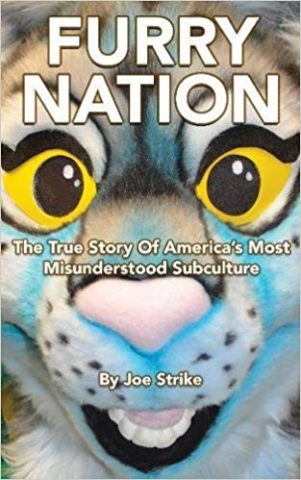 You might be a furry if you’ve been doodling your own imaginary menagerie for years, and they all have names, personalities, and backstories…if you wonder what cartoon animals do between cartoons, or if Bugs and Daffy are secretly lovers…if you’ve always had a secret desire to wear one of those sports-team mascot suits…or if there happens to be a fox or a tiger or a wolf or a rabbit trapped inside of you, waiting to escape.”
You might be a furry if you’ve been doodling your own imaginary menagerie for years, and they all have names, personalities, and backstories…if you wonder what cartoon animals do between cartoons, or if Bugs and Daffy are secretly lovers…if you’ve always had a secret desire to wear one of those sports-team mascot suits…or if there happens to be a fox or a tiger or a wolf or a rabbit trapped inside of you, waiting to escape.”
So explains Joe Strike in his extensively researched Furry Nation: The True Story of America’s Most Misunderstood Subculture (Cleis Press, $17.95. www.furrynation.com), a highly empathetic exploration of the community that first came to the attention of many non-members through a sensationally condescending Vanity Fair article back in 2001. Strike, who himself sometimes socializes in Komodo Dragon drag, offers a corrective to the mocking misperceptions of his global clan presented by that magazine piece, the tabloid TV features, and the disdainful documentaries that followed.
He takes pains to explain that being a furry doesn’t imply having a sexual attraction to anthropomorphic animals. He does, however, describe members of the community—known as “the furry fandom”—as sharing an awakening that LGBT people will surely relate to: “They all experienced a similar sense of validation upon discovering the fandom: they weren’t alone. Their personal interest in something their peers wouldn’t understand or approve of didn’t isolate them from the world after all…”
While Strike persuasively demonstrates that being a furry is a harmless, highly creative form of self-expression, he presents no compelling unified theory about who becomes a furry and why. Adventurous readers may enjoy the book as esoterica, but it feels written largely to build the self-esteem of its own subjects. Strike is preaching to the confurted.
